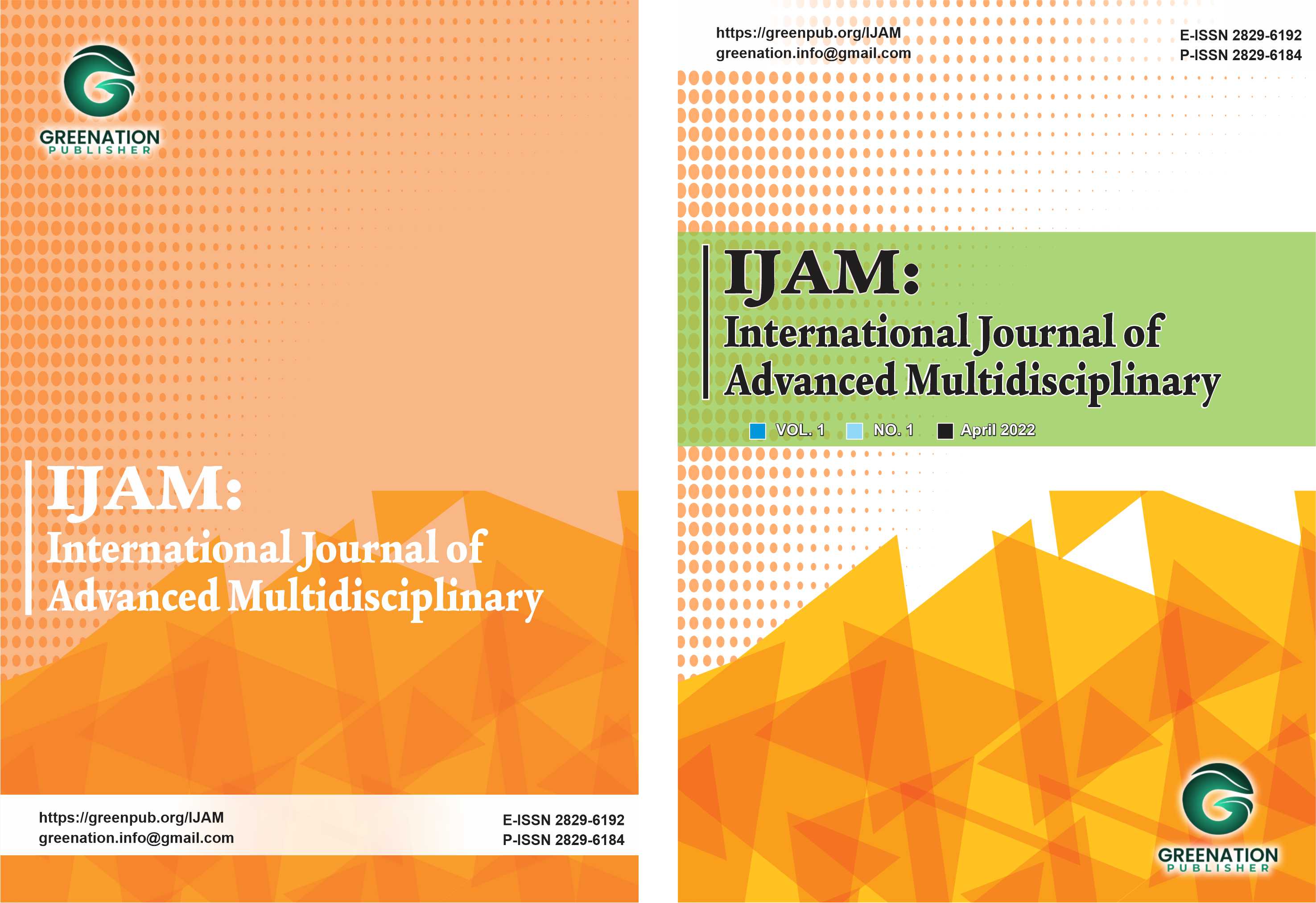Banking Company Stock Price Model
DOI:
https://doi.org/10.38035/ijam.v2i1.182Keywords:
CAR, LDR, ROA, SBI, Stock PriceAbstract
In the realm of economics, the banking sector plays a pivotal role as an intermediary between depositors and borrowers. Unique to this industry are financial ratios like the Capital Adequacy Ratio (CAR) and Loan to Deposit Ratio (LDR). In order to explore the effects of changing economic trends on Indonesian banking companies listed on the Stock Exchange from 2011 to 2016, this study analyzes variables such as CAR, LDR, ROA, and SBI. The sample size includes 27 consecutive banking companies listed from 2011 to 2016, and the analytical tool of choice is Eviews version 8. The study utilizes Least Square Pooled analysis, preceded by Fixed Effects Model and Random Effect Model analysis. The findings of this study reveal that the stock price fluctuations can be attributed to the processing variables of CAR, LDR, ROA, and SBI, which altogether account for 21.90%. Notably, the variables of CAR and ROA have a significant impact on the stock price, while LDR and SBI have no such effect
References
Anggraeni, Meidi. (2012). Pengaruh Tingkat Perputaran Piutang , LDR, Spread Management, CAR, dan Jumlah Masabah pada Profitabilitas LPD di KecamatanKuta. Jurnal Fakultas Ekonomi Universitas Udayana tahun 2012 halaman 303 – 315.
Anshory, L. (2010). Analisa Pengaruh Rasio Keuangan terhadap Harga Saham pada Perusahaan Manufaktur yang terdaftar di BEI. Tesis Program Magister Manajemen Universitas Gajah Mada. Tidak Dipublikasikan.
Arifin, Ali. (2002). MembacaSaham. Yogyakarta. Andi Offset.
Bringham, E.F. dan Houston, J.F. (2010). Essensial of Financial Management 2nd ed. Singapore.Cengage Learning Asia PteEtd.
Dendawijaya, Lukman, (2005), Manajemen Perbankan. Jakarta. PenerbitGhalia Indonesia.
Dornbusch, R.; S. Fischer ;dan Richard Starz. 2008. MakroEkonomi. Jakarta. Media Global Edukasi.
Ghozali, Imam. (2011). Aplikasi Analisis Multivariate dengan Program IBM SPSS 19. Semarang. BadanPenerbitUniversitasDiponegoro.
Gujarati, Damodar N. (2006). Dasar-dasar Ekonometrika. PenerjemahPenerbitErlangga. Jakarta.
Hanafi, M.M. dan A. Halim. (2012). Analisis Laporan Keuangan edisi Keempat. Yogyakarta. UPP STIM YKPN.
Hartono, J. (2012). Teori Portofolio dan Analisis Investasi edisi Ketujuh. Yogyakarta. BPFE.
Hasan, MudrikaAlamsyah. (2011). Analisis Faktor yang Mempengaruhi Price Book Value Saham (pada Bank yang Terdaftar di BEI periode 2005-2008). PekbisJurnal, Vol. 3, No. 3, November 2011, pp 536-548.
Hauwtan, Pegeen. (2010). Analisis Fundamental dan Teknikal Saham PT PP London Sumatra Indonesia, TBK. Tesis Program Magister Manajemen Universitas Indonesia.
Kewal, SuramayaSuci. (2012). Pengaruh Inflasi, Suku Bunga, Kurs, dan Pertumbuhan PDB TerhadapIndeksHargaSahamGabungan. JurnalEconomica, volume 8, Nomor 1, April 2012.
Merkusiwati, Ni Ketut Lely Aryani. (2007). Evaluasi Pengaruh Camel Terhadap Kinerja Perusahaan. Buletin Studi Ekonomi, Vol. 12, No. 1 tahun 2007.
Muhamad, Mega. (2013). Analisis Pengaruh Faktor Fundamental (Return on Assets, Return on Equity, dan Debt to Equity Ratio) Terhadap Harga Saham Perusahaan Keuangandan Non Keuangan di Bursa Efek Indonesia. Tesis Program Magister ManajemenUniversitas Gajah Mada. TidakDipublikasikan.
Muljono, TeguhPudjo. (1999). Analisa Laporan Keuangan Untuk Perbankan. Jakarta. Djambatan.
Nazir, Moh. (2013). Metode Penelitian. Bogor. Ghalia Indonesia.
Nu’man. (2009). Analisis pengaruh CAR, NIM, LDR, NPL, BOPO, dan EOQ terhadap perubaha nlaba (studi empiris pada Bank Umum di Indonesia periode laporan keuangan tahun 2004-2007). Tesis Program Magister Manajemen Universitas Diponegoro. Tidak Dipublikasikan.
Rizkiansyah, A. (2012).Analisa Pengaruh ROA, ROE, NPM dan EPS terhadap Harga Saham Perusahaan pada Sektor Industri Barang Konsumsi di Bursa Efek Indonesia Periode 2008-2010. Tesis Fakultas Ekonomi Universitas Gunadarma. Tidak Dipublikasikan.
SE NO.6/23/DPNP tanggal 31 Mei 2004. Bank Indonesia.
Sekaran, Uma. (2003). Research Methods for Business : A Skill Building Approach 4th ed. USA. John Wiley & Sons, Inc.
Sinungan, Muchdarsyah, (2000), Manajemen Dana Bank, EdisiKedua.Jakarta.BumiAksara.
Syauta, Risky Christian danIndraWidjaja. (2009). AnalisisPengaruhRasio ROA, LDR, NIM, dan NPL terhadap Abnormal Return SahamPerbankan di Indonesia padaPeriodeSekitarPengumuman Subprime Mortgage. Journal of Finance and Accounting, Vol. 1, No. 2, Juni 2009, pp 351-367.
Tandelilin, Eduardus. (2010). PortofolioInvestasi :TeoridanAplikasi. Edisi 1. Yogyakarta. Kanisius.
Tesa, Silvia. (2012). PengaruhSukuBunga International (LIBOR), NilaiTukar Rupiah/US$, danInflasiTerhadapIndeksHargaSahamGabungan di Bursa Efek Indonesia Tahun 2000-2010. Economic Developtment Analysis Journal Vol 1 no 1 Tahun 2012.
Wibisono, Yusuf. (2005). Metode Statistik.Yogyakarta. Universitas Gajah Mada.
Wulansari Rijata, Maria Lusiana Yulianti, Deden Komar Priatna, Winna Roswinna. (2022). The Effect Of Return on Assets, Return on Equity and Debt to Equity Ratio on Stock Return In Clothing And Luxury Goods Sub Sector Companies Listed On The Indonesia Stock Exchange. Journal of Accounting and Finance Management, Vol 3, No 4, September, 2022, page 166-175.
Zainuddin dan Jogiyanto Hartono. (1999). Manfaa trasio keuangan dalam memprediksi pertumbuhan perubahan laba: suatu studi empiris pada perusahaan perbankan yang terdaftar di BEJ. Jurnal Riset Akuntansi Indonesia, Vol.2, No.1, Januari, 1999, hal.66-90
Zuliarni, S. (2012). Pengaruh Kinerja KeuanganTerhadap Harga Saham Pada Perusahaan Mining And Mining Service di Bursa Efek Indonesia (BEI).JurnalAplikasiBisnis, Vol. 3 No. 1, Oktober 2012.
Downloads
Published
How to Cite
Issue
Section
License
Copyright (c) 2023 Winna Roswinna, Maria Lusiana Yulianti, Oyon Suharyono, Anna Noviana, Astrin Kusumawaardani, Kartika Pratiwi Putri, Rd Dewi Pertiwi

This work is licensed under a Creative Commons Attribution 4.0 International License.
Authors who publish their manuscripts in this journal agree to the following conditions:
- The copyright on each article belongs to the author(s).
- The author acknowledges that the International Journal of Advanced Multidisciplinary (IJAM) has the right to be the first to publish with a Creative Commons Attribution 4.0 International license (Attribution 4.0 International (CC BY 4.0).
- Authors can submit articles separately, arrange for the non-exclusive distribution of manuscripts that have been published in this journal into other versions (e.g., sent to the author's institutional repository, publication into books, etc.), by acknowledging that the manuscript has been published for the first time in the International Journal of Advanced Multidisciplinary (IJAM).























